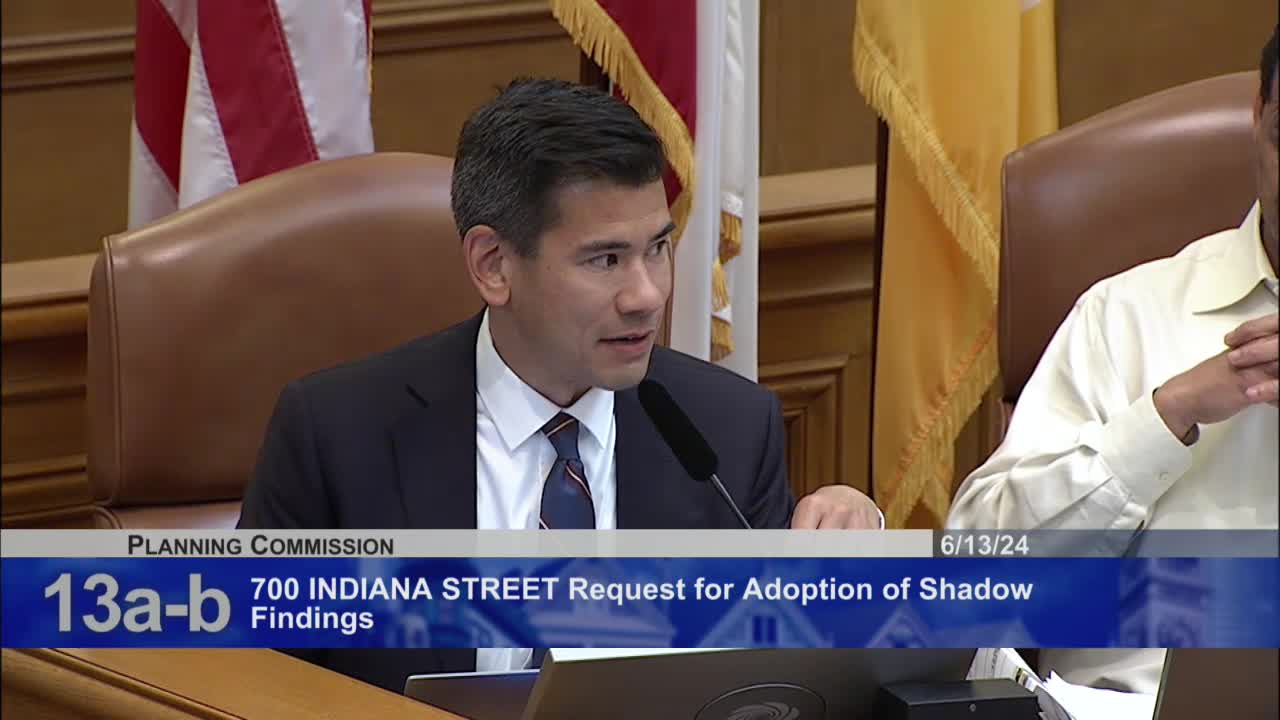City leaders debate new lab project amid shadow concerns
June 13, 2024 | San Francisco City, San Francisco County, California

This article was created by AI summarizing key points discussed. AI makes mistakes, so for full details and context, please refer to the video of the full meeting. Please report any errors so we can fix them. Report an error »

In a recent government meeting, discussions centered around a proposed lab project in San Francisco, highlighting both excitement and concerns among city officials. The project, which aims to enhance the local economy, has drawn attention for its potential benefits, particularly in a competitive landscape where other Bay Area communities are vying for similar developments.
Commissioners expressed a mix of support and reservations regarding the project's design and its impact on local parks. One commissioner noted the importance of being sensitive to the project's context, particularly concerning shadow impacts on Esprit Park, which is currently undergoing renovations. The proposed development is expected to add approximately 2% to the annual shadowing on the park, raising concerns about the balance between development and preserving public space.
While acknowledging the project's height is within the allowable limits, some officials voiced discomfort with the shadowing effects, particularly as the park is being revitalized. The discussion also touched on the zoning definitions related to lab and life science uses, with calls for updates to reflect the evolving nature of these spaces. This highlights a broader need for the city to adapt its land use definitions to accommodate mixed-use developments.
Additionally, the project sponsor was encouraged to engage with the community regarding potential streetscape improvements around Dogpatch Arts Plaza, emphasizing the importance of public input in urban development.
Concerns were also raised about the building's massing and design, with calls for clearer architectural drawings to better inform non-architectural members of the commission. The length of the building, nearly 400 feet, was noted as a significant factor in its visual impact on the surrounding residential neighborhood.
Overall, the meeting underscored the complexities of urban development in San Francisco, balancing economic growth with community needs and environmental considerations. As the project moves forward, ongoing dialogue between developers, city officials, and the community will be crucial in shaping its final form.
Commissioners expressed a mix of support and reservations regarding the project's design and its impact on local parks. One commissioner noted the importance of being sensitive to the project's context, particularly concerning shadow impacts on Esprit Park, which is currently undergoing renovations. The proposed development is expected to add approximately 2% to the annual shadowing on the park, raising concerns about the balance between development and preserving public space.
While acknowledging the project's height is within the allowable limits, some officials voiced discomfort with the shadowing effects, particularly as the park is being revitalized. The discussion also touched on the zoning definitions related to lab and life science uses, with calls for updates to reflect the evolving nature of these spaces. This highlights a broader need for the city to adapt its land use definitions to accommodate mixed-use developments.
Additionally, the project sponsor was encouraged to engage with the community regarding potential streetscape improvements around Dogpatch Arts Plaza, emphasizing the importance of public input in urban development.
Concerns were also raised about the building's massing and design, with calls for clearer architectural drawings to better inform non-architectural members of the commission. The length of the building, nearly 400 feet, was noted as a significant factor in its visual impact on the surrounding residential neighborhood.
Overall, the meeting underscored the complexities of urban development in San Francisco, balancing economic growth with community needs and environmental considerations. As the project moves forward, ongoing dialogue between developers, city officials, and the community will be crucial in shaping its final form.
View full meeting
This article is based on a recent meeting—watch the full video and explore the complete transcript for deeper insights into the discussion.
View full meeting
